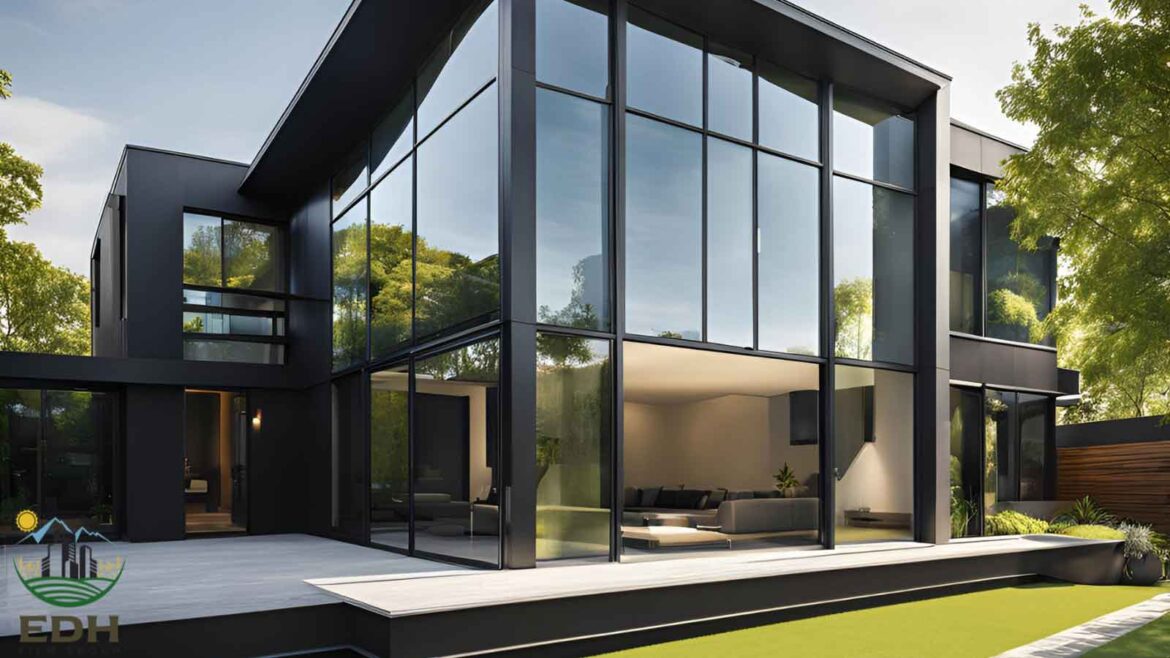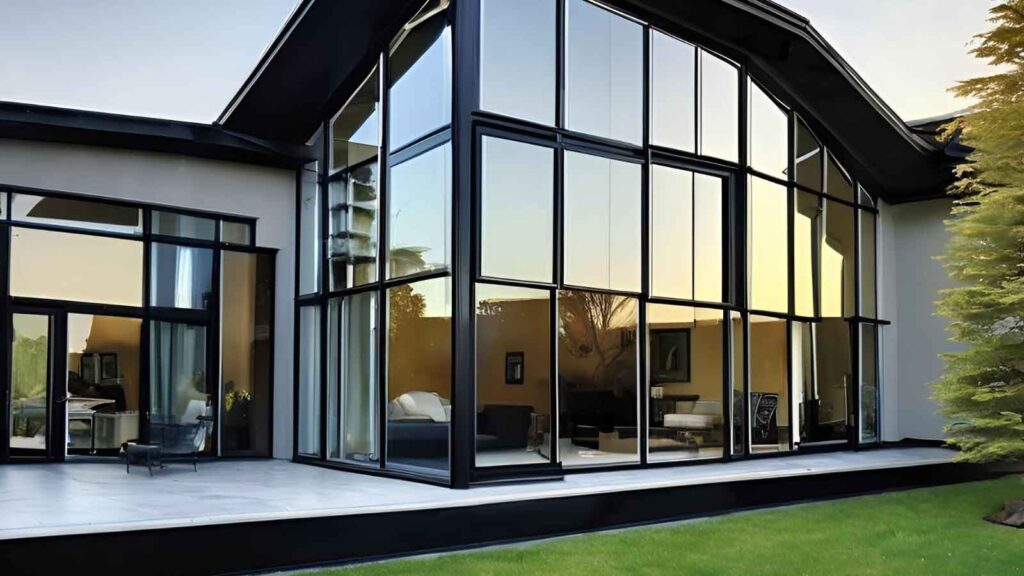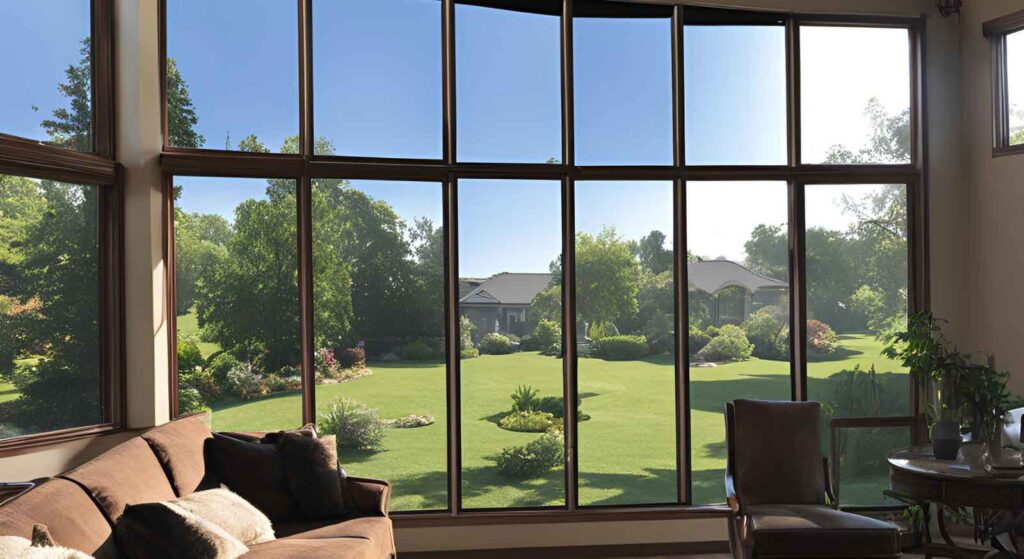Homeowners are always looking for practical ways to cut energy costs. Home window tinting is an often overlooked solution that provides year-round savings while enhancing comfort and protecting interiors. By reducing heat gain, improving insulation and blocking harmful UV rays, residential window tinting saves money and boosts the longevity of your home’s furniture and finishes.
Benefits of Window Tinting for Energy Efficiency
Window tinting is more than just a way to darken your windows; it’s a practical, cost-effective solution that significantly enhances energy efficiency in your home. Residential window tinting allows homeowners to save on energy bills while creating a comfortable living environment by addressing issues like solar heat gain, heat loss and UV exposure. Below, we explore the key benefits of window tinting for energy efficiency in both summer and winter months and how it protects your home’s interiors from UV damage.
Reducing Heat Gain in Summer
The sweltering summer months bring intense heat and unprotected windows are a major culprit for rising indoor temperatures. When sunlight streams through your windows, it brings with it a wave of solar heat that forces your air conditioning system to work overtime. This results in higher cooling costs and creates uncomfortable hot spots in your home. A house window film acts as a shield, reducing the impact of solar heat and making your home more livable and energy-efficient. Key benefits include:
- Blocking up to 78% of solar heat: Window tinting significantly reduces the amount of heat entering your home, making it easier to maintain a cool and comfortable environment.
- Minimizing hot spots: Solar heat can create uneven temperature zones, making some areas of your home much hotter than others. Window tinting ensures a more consistent temperature throughout your living spaces.
Additionally, window tinting doesn’t compromise natural light. Unlike heavy curtains or blinds, home window tint allows sunlight to filter through while keeping unwanted heat at bay. This means you can enjoy bright, sunlit rooms without the discomfort of excessive warmth or glare.
Enhancing Insulation in Winter
While summer heat is a common concern, winter presents its own set of challenges when it comes to energy efficiency. Heat loss through windows is one of the primary reasons for skyrocketing heating costs during colder months. This is where residential window film excels by adding an extra layer of insulation to your windows. Here’s how window tinting helps during winter:
- Reducing heat loss: Windows are often the weakest point of insulation in a home. Tinting creates a barrier that reflects heat into your living spaces, preventing it from escaping through the glass.
- Cutting heating expenses: By keeping warmth inside, window tinting reduces the burden on your heating system, resulting in noticeable savings on your energy bills.
- Year-round energy efficiency: The added insulation provided by residential window tinting ensures that your home remains energy-efficient no matter the season.
Think of window tinting as upgrading your existing windows to a higher performance level without the need for costly replacements. It’s a practical solution that enhances your home’s comfort and energy efficiency while reducing your carbon footprint.
UV Protection and Its Financial Impact
Beyond managing heat, window tinting offers a vital layer of protection against the sun’s harmful ultraviolet (UV) rays. Prolonged UV exposure can damage your interiors, from faded furniture to weakened flooring materials. This damage not only affects the aesthetics of your home but also results in costly replacements over time. Window tinting minimizes UV damage with the following advantages:
- Blocking up to 99% of harmful UV rays: Most residential window films are engineered to filter out nearly all UV radiation, protecting your interiors and reducing your risk of skin damage from prolonged sun exposure.
- Preserving furniture and finishes: UV rays can fade and weaken fabrics, wood finishes and artwork. Window tinting acts as a safeguard, maintaining the color and quality of your belongings for years to come.
- Reducing replacement costs: By protecting your interiors from sun damage, window tinting eliminates the need for frequent replacements, saving you money in the long run.
This translates into a dual benefit for homeowners: reduced energy bills and less spending on maintaining or replacing household items. With residential window film, you’re not only enhancing your home’s efficiency but also safeguarding your investment in furniture, flooring and décor.
How Window Film Works
Understanding how home window tinting functions is essential to realizing its value in energy efficiency and home comfort. Window films are more than just a thin layer applied to glass; they are a technological solution that enhances the performance of your windows, balancing heat reduction, UV protection and aesthetic appeal. Here’s a closer look at the science and variety behind residential window film options.
The Science Behind Solar Control Films
Solar control films represent a significant advancement in material engineering, specifically designed to address issues such as heat gain and UV exposure while enhancing light quality within your home. These films operate on sophisticated principles that alter the way light and heat interact with your windows.
How Solar Control Films Work:
- Advanced Materials for Heat Management: Made from high-tech materials such as polyester, metalized coatings or nano-ceramic particles, solar control films actively reflect and disperse heat. This reflection and dispersion help keep indoor temperatures more manageable and reduce the burden on air conditioning systems, enhancing overall energy efficiency.
- Balanced Light with Reduced Glare: By moderating the intensity of incoming sunlight, solar control films minimize glare, which can interfere with viewing computer screens, televisions and other digital displays. This reduction is achieved without compromising the clarity or quality of natural light entering the space.
- Aesthetic Integration: Unlike more obtrusive window treatments such as blinds or heavy drapes, solar control films offer a minimalistic approach that does not detract from the architectural aesthetics of your home. They maintain the natural appearance of your windows while providing functional benefits.
By integrating these high-tech films into your home, you can achieve a perfect balance of light control, UV protection and energy efficiency, all while enjoying the natural beauty of well-lit, comfortable living spaces.
Types of Window Tints Available
One size does not fit all when it comes to residential window tinting. Different types of films cater to various homeowner needs, from enhancing privacy to maximizing UV protection or achieving a seamless aesthetic. Below are the most common types of window tints and their unique benefits:
- Reflective Films:
- Reflective films feature a metallic coating that effectively blocks heat and glare.
- These films are ideal for areas with intense sunlight, providing strong heat rejection and reducing indoor hot spots.
- Reflective films also offer daytime privacy, creating a mirrored exterior surface that prevents others from seeing inside your home.
- Non-Reflective Films:
- For those who prefer a more natural look, non-reflective films provide subtle heat and UV protection without the shiny appearance of reflective films.
- These films are great for maintaining your home’s aesthetic while enhancing energy efficiency and reducing sun damage to interiors.
- Clear Films:
- Explicit window films are nearly invisible, making them perfect for homeowners who want to preserve their view while protecting against UV rays.
- These films filter out harmful sunlight, which causes furniture and flooring to fade and deteriorate while allowing maximum natural light to enter your home.
Each type of film offers distinct advantages, allowing homeowners to select the best option based on their priorities—heat rejection, privacy, UV protection or aesthetics. With the help of professional consultation, you can choose the ideal house window film for your specific needs.
Initial Costs vs. Long-Term Savings
Investing in house window tinting may initially seem like a substantial expense, but when you analyze the financial and environmental benefits over time, the decision becomes easy. The upfront cost of installation is quickly recouped through reduced energy bills, prolonged lifespan of home furnishings and overall enhanced home comfort. Let’s dive into the costs and the measurable savings residential window film can provide.
Breaking Down Installation Costs
Understanding the cost components of residential window tinting is critical to evaluating its overall value. Several factors influence the pricing of window tint installation, including the type of film, the size and number of windows and whether you opt for professional installation. Here’s what contributes to the overall cost:
- Size and Quantity of Windows: The cost of window tinting can vary significantly based on the size and number of windows. Larger windows or homes with extensive glass surfaces will naturally require more material, which increases the overall cost. Conversely, smaller homes or rooms with fewer windows might find the upgrade more affordable, making it an accessible improvement for many homeowners.
- Type of Film Used: The choice of film also affects the cost. Premium options like reflective or clear UV-protective films are pricier but offer superior energy savings and longer lifespans. For those on a budget, more economical films are available, though they may not deliver the same performance or durability.
- Professional Installation Fees: Opting for professional installation might increase the initial investment, but it ensures the film is applied correctly, free of bubbles or imperfections. This precision in application not only enhances the appearance but also significantly extends the lifespan and effectiveness of the window tinting.
Calculating Long-Term Energy Savings
The financial benefits of residential window tinting start accruing as soon as the installation is complete. By reducing heat gain in the summer and heat loss in the winter, window tinting helps homeowners save on utility bills year-round. Let’s look at the long-term savings in more detail:
- Year-Round Energy Efficiency:
In the winter, residential window film acts as an insulating layer, helping to retain heat inside the home. This reduces reliance on heating systems, lowering costs and energy consumption. By maintaining a consistent indoor temperature throughout the year, window tinting reduces strain on HVAC systems, extending their lifespan and reducing maintenance costs.
- Quick Return on Investment (ROI):
The energy savings generated by home window tinting typically offset the initial installation cost within three to five years. This fast ROI makes window tinting one of the most cost-effective home upgrades for homeowners who prioritize energy efficiency. Investing in house window film is not just about reducing your current energy expenses—it’s about long-term savings and adding value to your property. While the upfront cost may seem significant, the combination of energy savings, increased home comfort and reduced maintenance costs makes it a practical and profitable investment.
Choosing the Right Tint for Your Home
Selecting the perfect home window tint requires careful consideration of multiple factors, including energy efficiency, visual appeal and functionality. Every home is unique, so choosing the right residential window film involves balancing these elements to meet your specific needs. A well-chosen film enhances your home’s energy performance and adds value, comfort and style.
Factors to Consider When Selecting Window Film
When it comes to choosing the ideal house window film, understanding your priorities and requirements is essential. Here are some key factors to evaluate: Aesthetics:
- Design Harmony: The house window tinting you select should complement your home’s existing design. Reflective films can add a sleek, modern look, while explicit films maintain the original appearance of your windows.
- Color Options: Choose from a variety of hues or clear tints to match your home’s interior and exterior. Neutral-colored films are great for blending with any style, while darker films create a bolder visual effect.
- Natural Light Balance: Ensure the film allows enough natural light to brighten your interiors without excessive glare. A balance between natural light and heat reduction is key.
Privacy Needs:
- Daytime Privacy: If privacy is a concern, consider reflective films that provide one-way visibility during the day. These films allow you to see outside while preventing others from looking in.
- Frosted and Decorative Films: For added privacy in bathrooms, bedrooms or front-facing rooms, frosted or textured films are an excellent option. These films maintain privacy while still allowing natural light to filter through.
- Custom Solutions: Some residential window tinting options can be customized to include decorative patterns or logos, combining privacy with visual interest.
Making the right choice for residential window film starts with clearly understanding your home’s needs and preferences. Whether your priority is cutting energy costs, improving privacy or enhancing the overall look of your home, there’s a window film designed to meet your expectations.
Transform Your Home with Energy-Saving Window Tinting
Investing in home window tinting is more than just an upgrade—it’s a strategic choice for homeowners seeking long-term savings and enhanced comfort. By reducing heat gain in summer, improving insulation during winter and blocking up harmful UV rays, residential window tinting protects your interiors, lowers energy costs and creates a more enjoyable living space. It’s a cost-effective solution that adds value, functionality and style to your home.
Take control of your energy costs and create a more comfortable, efficient home. Contact EDH Film Group for a free consultation and discover how our house window film solutions can transform your living space. From personalized advice to professional installation, our team is committed to delivering results that meet your needs. Don’t wait—let us help you achieve energy savings and interior protection today!




